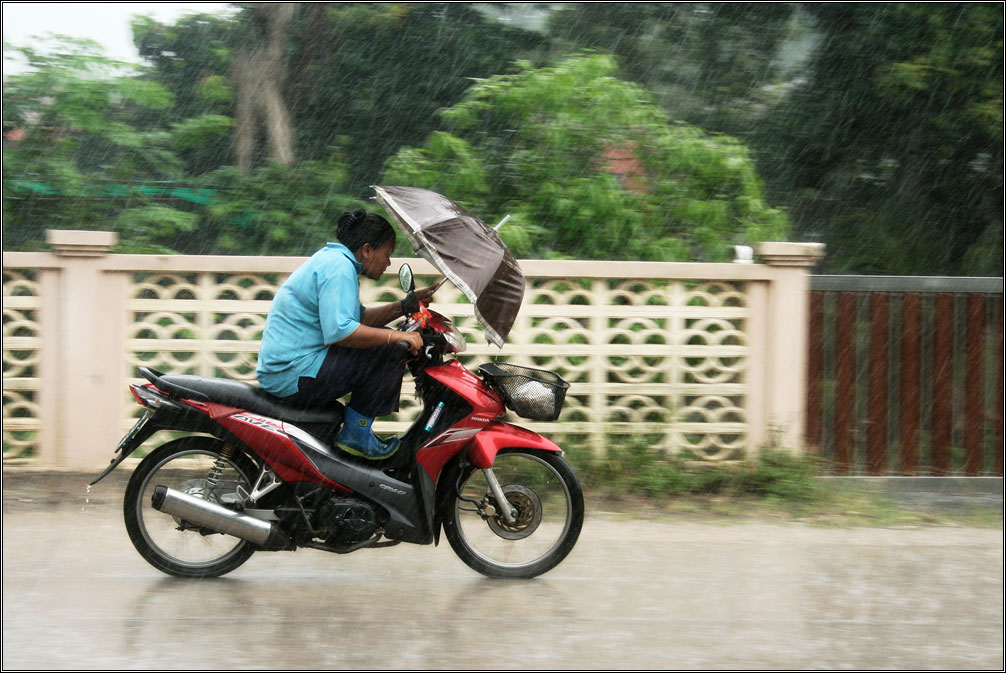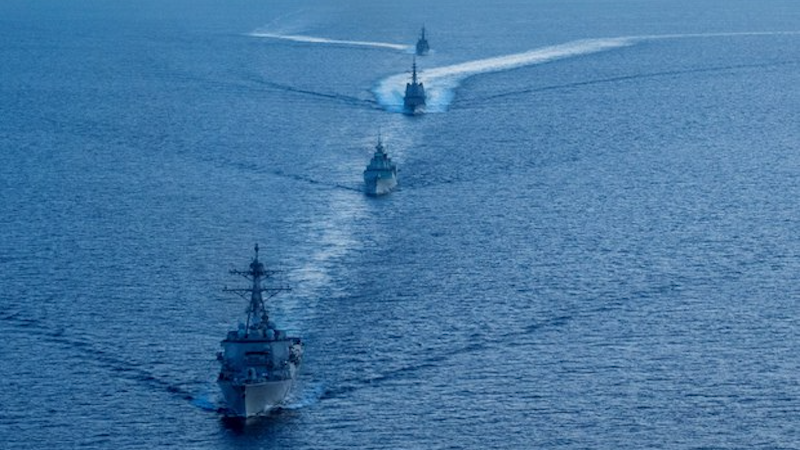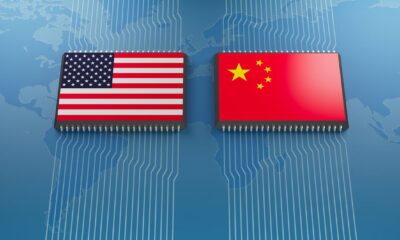Asean
Behind Australia’s India uranium sale decision
Author: Sandy Gordon, ANU Australia’s Prime Minister, Julia Gillard, would have been more politically comfortable had she left the issue of uranium sales to India rusting in the ‘parking lot’. The pressing question is therefore: why visit the issue now? There are clearly a number of factors involved, but it is no accident that her announcement was made on the eve of President Obama’s visit to Australia, who came to announce a new US engagement in Asia and an enhanced role for Australia. The new US strategic thrust is mainly about the rise of China and relative decline of the US. With bin Laden dead and after years of US ‘boots on the ground’ in the Middle East and Southwest Asia, Washington has concluded that its wars are providing security for others, such as China, to ‘free ride’, while America pays a price it can ill afford, both financially and politically. All this saps America’s capacity to play in the real game, which has now shifted to Asia. So where does India fit in? The CIA has assessed that India is a ‘swing state’ in Asia. As a rapidly rising power with a vast population weighted to youth , India has the long-term potential to be as important an Asian power as China. How India chooses to lock in to Asia’s security architecture will be crucial to how that architecture is likely to evolve. Military exercises and exchanges between India and the US have gathered pace and developed in sophistication since 1991. President Bush’s 2005 decision to bring India into the nuclear ‘tent’ was very much part of this developing strategic relationship. Following this nuclear agreement, the US signed a number of important ‘end user’ agreements with India, enabling the transfer of sophisticated military technologies. It has even held out the prospect that India might become involved in the production of the F-35 joint strike fighter. Washington’s unstated intent is to put China off its stride by developing a relationship with another emerging — and democratic — power. It thereby hopes to ‘manage’ China’s rise from a position of strength. But viewed from India, a strategic relationship with the US is by no means a done deal. In fact, there are two views in New Delhi: one, centred on the Ministry of External Affairs, argues that India should stand equidistant between China and the US; while the other, seemingly centred on elements within the National Security Council and defence establishment, argues that the only way to deal with China is to stand up to it. At the moment, India is using its relationship with the US to acquire technology and ‘hedge’ in light of its uncertain relationship with China. And should its interactions with China deteriorate, the US relationship would eventually be ‘called in’. That is not to say India would become an ‘ally’ of the US in the formal sense, but that the strategic quality of the relationship would deepen. The debate in Australia on how to handle the rise of China roughly parallels the one being conducted in India. Some argue the US should make strategic space for China’s rise in the hope of a ‘concert of powers’ emerging in Asia , of which India would be a member. Those of a more realist bent argue that China should be dealt with from a position of strength. Washington’s current reassertion of its offshore balancing role in Asia is dependent on a series of bilateral relationships, including with Australia, Japan, India and South Korea. Any attempt to shift this ‘hub and spokes’ model to a multilateral balance is fraught with difficulty, in that Beijing would quickly perceive it as an attempt to ‘contain’ China, just as occurred in 2007 with the abortive ‘quadrilateral’ proposal. The US is therefore essentially engaged in a process of seeking bilaterally to strengthen its relationships, while at the same time indirectly using this process to achieve greater ‘lateral’ connection between the various ‘spokes’, but short of any formal arrangement. The aim is to make it clear to China that if it does not play by the rules, it could quickly find itself arraigned against a powerful multilateral balance of the ‘like-minded’. Australia–India relations and the sale of uranium are important at many levels and Washington’s China strategy is only one of them. But firming friendship between India and Australia and a deepening economic relationship reflecting Australia’s commodity supply role would effectively help tie India in with a regional ‘incipient balance’ of the like-minded and mitigate Australia’s dilemma — caught as it currently is between Washington and Beijing. Sandy Gordon is a Visiting Fellow at RegNet , College of Asia and the Pacific, the Australian National University. This article first appeared on the South Asia Masala website Can India and China coexist in an Asian concert of powers? Australia and India China and India and the transition of regional power

Author: Sandy Gordon, ANU
Australia’s Prime Minister, Julia Gillard, would have been more politically comfortable had she left the issue of uranium sales to India rusting in the ‘parking lot’.

The pressing question is therefore: why visit the issue now?
There are clearly a number of factors involved, but it is no accident that her announcement was made on the eve of President Obama’s visit to Australia, who came to announce a new US engagement in Asia and an enhanced role for Australia.
The new US strategic thrust is mainly about the rise of China and relative decline of the US. With bin Laden dead and after years of US ‘boots on the ground’ in the Middle East and Southwest Asia, Washington has concluded that its wars are providing security for others, such as China, to ‘free ride’, while America pays a price it can ill afford, both financially and politically. All this saps America’s capacity to play in the real game, which has now shifted to Asia.
So where does India fit in?
The CIA has assessed that India is a ‘swing state’ in Asia. As a rapidly rising power with a vast population weighted to youth, India has the long-term potential to be as important an Asian power as China. How India chooses to lock in to Asia’s security architecture will be crucial to how that architecture is likely to evolve.
Military exercises and exchanges between India and the US have gathered pace and developed in sophistication since 1991. President Bush’s 2005 decision to bring India into the nuclear ‘tent’ was very much part of this developing strategic relationship. Following this nuclear agreement, the US signed a number of important ‘end user’ agreements with India, enabling the transfer of sophisticated military technologies. It has even held out the prospect that India might become involved in the production of the F-35 joint strike fighter.
Washington’s unstated intent is to put China off its stride by developing a relationship with another emerging — and democratic — power. It thereby hopes to ‘manage’ China’s rise from a position of strength.
But viewed from India, a strategic relationship with the US is by no means a done deal. In fact, there are two views in New Delhi: one, centred on the Ministry of External Affairs, argues that India should stand equidistant between China and the US; while the other, seemingly centred on elements within the National Security Council and defence establishment, argues that the only way to deal with China is to stand up to it.
At the moment, India is using its relationship with the US to acquire technology and ‘hedge’ in light of its uncertain relationship with China. And should its interactions with China deteriorate, the US relationship would eventually be ‘called in’. That is not to say India would become an ‘ally’ of the US in the formal sense, but that the strategic quality of the relationship would deepen.
The debate in Australia on how to handle the rise of China roughly parallels the one being conducted in India. Some argue the US should make strategic space for China’s rise in the hope of a ‘concert of powers’ emerging in Asia, of which India would be a member. Those of a more realist bent argue that China should be dealt with from a position of strength.
Washington’s current reassertion of its offshore balancing role in Asia is dependent on a series of bilateral relationships, including with Australia, Japan, India and South Korea. Any attempt to shift this ‘hub and spokes’ model to a multilateral balance is fraught with difficulty, in that Beijing would quickly perceive it as an attempt to ‘contain’ China, just as occurred in 2007 with the abortive ‘quadrilateral’ proposal.
The US is therefore essentially engaged in a process of seeking bilaterally to strengthen its relationships, while at the same time indirectly using this process to achieve greater ‘lateral’ connection between the various ‘spokes’, but short of any formal arrangement. The aim is to make it clear to China that if it does not play by the rules, it could quickly find itself arraigned against a powerful multilateral balance of the ‘like-minded’.
Australia–India relations and the sale of uranium are important at many levels and Washington’s China strategy is only one of them. But firming friendship between India and Australia and a deepening economic relationship reflecting Australia’s commodity supply role would effectively help tie India in with a regional ‘incipient balance’ of the like-minded and mitigate Australia’s dilemma — caught as it currently is between Washington and Beijing.
Sandy Gordon is a Visiting Fellow at RegNet, College of Asia and the Pacific, the Australian National University.
This article first appeared on the South Asia Masala website
- Can India and China coexist in an Asian concert of powers?
- Australia and India
- China and India and the transition of regional power
See more here:
Behind Australia’s India uranium sale decision
Asean
Deadly Floods and Landslides Strike Indonesia and Thailand – Vietnam Plus

At least seven people were killed, two others were injured and some were likely to be missing after flash floods and landslides hit the Indonesian eastern province of Maluku on the morning of August 25, according to the locality’s disaster management and mitigation office.
Heavy rainfall, which began on August 24, has triggered the disasters in Ternate city. Many local residents are in urgent need of support, authorities said.
Soldiers, police, local search and rescue personnel, disaster management staff, and volunteers are all involved in the ongoing rescue efforts, which include evacuating those trapped by the landslides and recovering materials from homes swept away by the floods.
Meanwhile in Thailand, local authorities reported that the death toll from a landslide in the popular resort province of Phuket on August 23 has risen to 13, including a Russian couple.
Source : Floods, landslides kill many in Indonesia, Thailand – Vietnam Plus
Asean
Tug of War in Southeast Asia: Can ASEAN-China Dialogue Shift the Scales Toward Peace? – An Analysis

The ASEAN-China dialogue is vital for regional stability, addressing economic cooperation and security challenges, particularly in the South China Sea, amidst significant geopolitical complexities and ongoing territorial disputes.
ASEAN-China Dialogue: A Path Towards Cooperation
The ASEAN-China dialogue plays a pivotal role in Southeast Asia’s diplomacy, fostering economic collaboration while addressing security challenges. Despite advances, particularly in managing tensions in the South China Sea, significant barriers remain to achieving lasting peace and stability in the region. ASEAN’s capacity to maintain its unity and centrality is crucial amidst complex power dynamics involving China and other global players.
Navigating Tensions and Economic Relations
A pressing concern within this dialogue is the South China Sea territorial disputes, which involve multiple ASEAN states and China. The militarization of the area raises alarm among regional stakeholders, necessitating urgent negotiations for a Code of Conduct (COC) to manage conflicts. Additionally, the growing economic interdependence fostered by initiatives like the Regional Comprehensive Economic Partnership (RCEP) strengthens ASEAN-China ties, yet it also raises concerns about potential political leverage influencing member states’ autonomy.
The Challenge of Regional Stability
While the ASEAN-China dialogue offers a framework for promoting peace, its effectiveness is conditioned by broader geopolitical contexts, including China’s rivalry with the United States. The success of this dialogue rests on sustaining a commitment to multilateralism and peaceful dispute resolution. As ASEAN adapts to these complex dynamics, it must reinforce its unity and cooperative strategies, ensuring the region’s stability amid evolving challenges.
Source : Tug Of War In Southeast Asia: Will ASEAN-China Dialogue Tip The Balance Towards Peace? – Analysis
Asean
Cambodia Invites Business Leaders to Join the 21st China-ASEAN Expo in Nanning

Cambodia invites businesspeople to the 21st China-ASEAN Expo in Nanning, promoting trade and investment with incentives like hotel coupons and networking opportunities in various sectors.
Cambodia Invites Participation in CAEXPO 2024
Cambodia is actively encouraging business leaders, investors, and service providers to participate in the upcoming 21st China-ASEAN Expo (CAEXPO), set to take place from September 24-28 in Nanning, China. According to a Ministry of Commerce announcement, CAEXPO serves as a vital platform for trade and investment collaborations between ASEAN nations and China.
To facilitate Cambodian participation, the Ministry invites interested individuals to apply as Trade Visitors by August 31, 2024. Participants will benefit from hotel coupons, dining vouchers, and shuttle services to the expo venue. Furthermore, attendees can engage in business matchmaking in sectors such as food processing, digital technology, and renewable energy products.
Kin Phea, from the Royal Academy of Cambodia, emphasized the advancements in China-ASEAN relations, particularly concerning economic cooperation, tourism, and cultural exchanges. He noted that both sides have become each other’s largest trading partners, enhancing collaboration through the Belt and Road initiative, focusing on infrastructure and sustainable development.
Source : Cambodia encourages businesspeople to partake in 21st China-ASEAN Expo in Nanning











